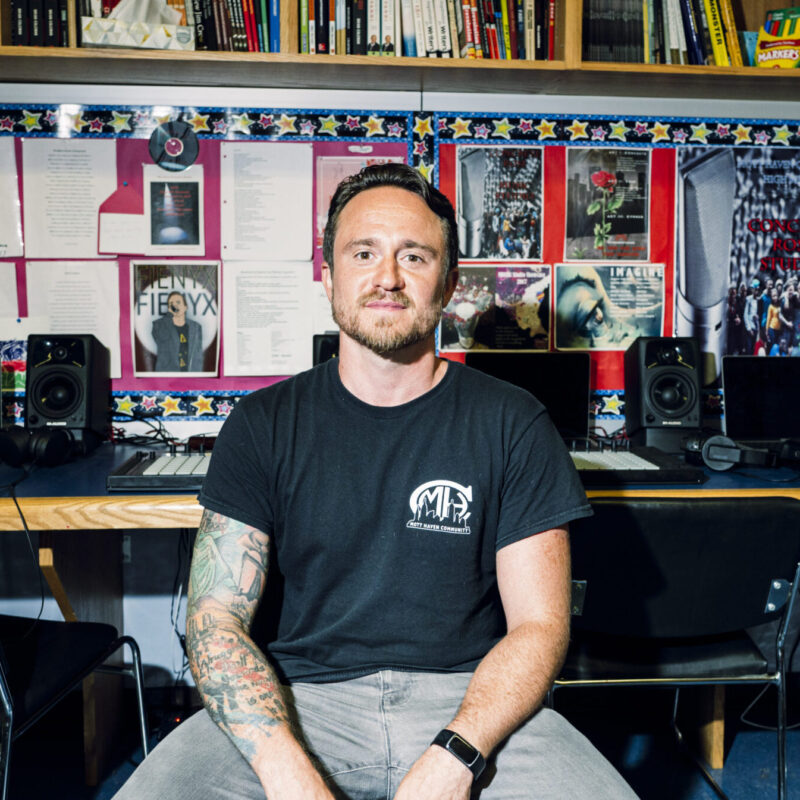By: Rebecca van der Weij
Experiences of trauma during childhood can have a profound impact on the present and future development and well-being of a child. Research continues to show that rapid brain growth begins in the third trimester of pregnancy until around six years old, while ongoing brain development doesn’t stop until our mid-twenties (Cotiga and Stulz-Koller, 2021). Typical development can be interrupted by traumatic experiences that cause physical, psychological, and emotional distress and subjectively overwhelms a child’s ability to stay present and cope. Symptoms of traumatic stress can show up after any number of overwhelming adverse experiences such as exposure to violence, war, neglect, or separation. As an example, if a child does not experience a secure attachment and their need for attuned care is neglected then as a natural consequence their brains and bodies internalise messages that might sound like, “I am not safe, adults cannot be trusted, I have to look after myself”. These kinds of internalisations can have significant effects on development and can impact social, emotional, cognitive, and physical functioning (Mendoza and Bradley, 2021). This is similarly seen in situations where abuse is present at home. To survive, a child needs a caregiver but if this relationship is intertwined with abuse, then the child is stuck between needing a parent and needing to get away from the parent. The trauma of such experiences can lead to a distrust in people and the world (Mendoza and Bradley, 2021).
However, the processing of traumatic experiences, if approached correctly, can lead to recovery and healing. It is possible for a child to restructure the way they have learnt to see themselves and the world. Play therapy has often been used in this context because children can’t always verbalise experiences and need a creative outlet to express their inner worlds, relieve emotional tensions, and communicate trauma that has been encoded in sensations (Cotiga and Stulz-Koller, 2021). In my own work with children, I have observed many occasions in which a child might draw a comic strip to illustrate a recent upsetting interaction with a parent or use a pretend doctor’s kit to role play a recent visit to the doctor for a vaccination. A safe and secure therapeutic space allows for interventions that remould previous understandings of traumatic experiences (Mendoza and Bradley, 2021). Although the method of play therapy is broad this post will focus on using storytelling and music as a way to begin the process of healing from trauma.
Stories can act as windows through which children understand and process their own experiences and equally provides a therapist or caregiver a tool for entering the world of a child (Mendoza and Bradley, 2021). Through reading a fictional book or telling a story using toys as characters, a child is provided with a safe distance between them and their traumatic experiences. Mendoza and Bradley (2021) illustrate this process through the story of a five-year-old child, sexually abused by her stepfather. In her first counselling sessions she was unable to verbalise the experience, but she liked Beauty and the Beast and in the therapeutic space was drawn to a princess crown and a stuffed unicorn. The characters became the child’s outlet, the vehicle to share their story of abuse and the feelings associated with the abuse. As the story continued to develop, the fairy godmother was eventually freed and assisted the unicorn in capturing the snake. As this little girl processed her trauma experiences, she used metaphor to feel safe to emerge from the sand and learned to trust in the care and help from her foster mum and therapist.
This story reminds me of some of my own approaches to working with young adults who have difficulty putting into words past and current emotions and illustrates that ‘play’ can be used as a processing method across the lifespan. I will often ask clients to draw what they are feeling starting with a circle that represents a safe place and then freestyle to create whatever comes up. Afterwards we talk about what their picture means, what it is trying to say and which parts of them it represents. I’m still amazed by how much comes up from such a simple activity. Drawings and shapes speak for unspoken sadness, confusion, and critical inner voices. Art becomes the bridge between someone’s inner world and their ability to share it with me. I use similar practices in my own processing of emotions and find it helpful to paint feelings. For example, I might ask myself what colour/s shame looks like for me. What texture does it have? What shape? How wide? And then I use watercolours to paint my version of shame. Afterwards I feel lighter, I sense more clarity and the shame becomes less overwhelming giving me more space to explore its origins.
Music can also act as a bridge between post-processing of traumatic events and the inability or loss of verbal expression. While the loss of expressive ability is a common symptom of traumatic stress, this is especially relevant to children whose verbal communication is already limited and therefore music can be adapted to act as the voice for the trauma (Felsenstein, 2012). A beautiful example can be found in a paper written by Rivka Felsenstein (2012) in which she describes her own experience of providing music therapy to a group of Israeli pre-school children who along with their families were forced to evacuate from their homes in the Gaza Strip. Such a forced eviction compromised feelings of security and safety and left many of the children traumatised, this was worsened by their status as a refugee. These children received weekly music therapy treatment over a period of five months consisting of, listening and dancing to music, playing music, and musical story-telling and role playing. Throughout the course of the therapy, it was noticeable that initial behaviours such as crying, resisting participation, verbal and physical aggression lessened as the children became more confident in expressing their feelings though passive musical play. Playing music together developed a sense of belonging within a group that didn’t require eye contact or the use of language. The children could hear and be heard without having to say anything.
Even for children without such traumatic experience’s music can be therapeutic. In my work as a nanny playing music has helped regulate children’s emotions after a long day of school, particularly during the car journey home stuck in traffic. Sometimes a child’s frustrations threaten to overwhelm, and I notice that when they reach for their guitar or the piano it can act as a tool for self-soothing. I have started attending Barefoot Dancing sessions at a local town hall. The two-hour session provides a space for free movement alongside intentionally curated music. It’s a freeing experience that provides an opportunity for me to move my attention from my mind to the rest of my body and allows for the kind expression that, similar to playing an instrument, requires no language and yet it feels healing and incredibly therapeutic.
While the impact of traumatic experiences can be complicated and multi-layered it seems that the process of recovery and healing doesn’t always have to be. Play is the natural way in which children (and adults) observe, understand, and develop in the world and it can equally offer a pathway through which healing is attained. Post-trauma healing can show up wherever a child is nurtured, feels at ease, and is enveloped within a safe space. If these spaces can provide books, toys and instruments and an attuned adult, then children can reach for the capacity to heal within themselves and begin telling their story.
References:
Felsenstein, Rivka. “From Uprooting to Replanting: On Post-Trauma Group Music Therapy for Pre-School Children.” Nordic Journal of Music Therapy, vol. 22, no. 1, Routledge, 2013, pp. 69–85, https://doi.org/10.1080/08098131.2012.667824.
Mendoza, Krystyne, and Loretta Bradley. “Using Storytelling for Counseling With Children Who Have Experienced Trauma.” Journal of Mental Health Counseling, vol. 43, no. 1, American Mental Health Counselors Association, 2021, pp. 1–18, https://doi.org/10.17744/mehc.43.1.01.
Alin C Cotigă, and Antonia Stulz-Koller. “Early Traumatic Events & Implications for the Development of Emotional Connection: Two Case Studies Using Trauma Play Therapy with Children.” Journal of Prenatal & Perinatal Psychology & Health, vol. 35, no. 1, Association for Pre & Perinatal Psychology and Health, 2021, pp. 58–76.
Photo by Alexander Grey on Unsplash



